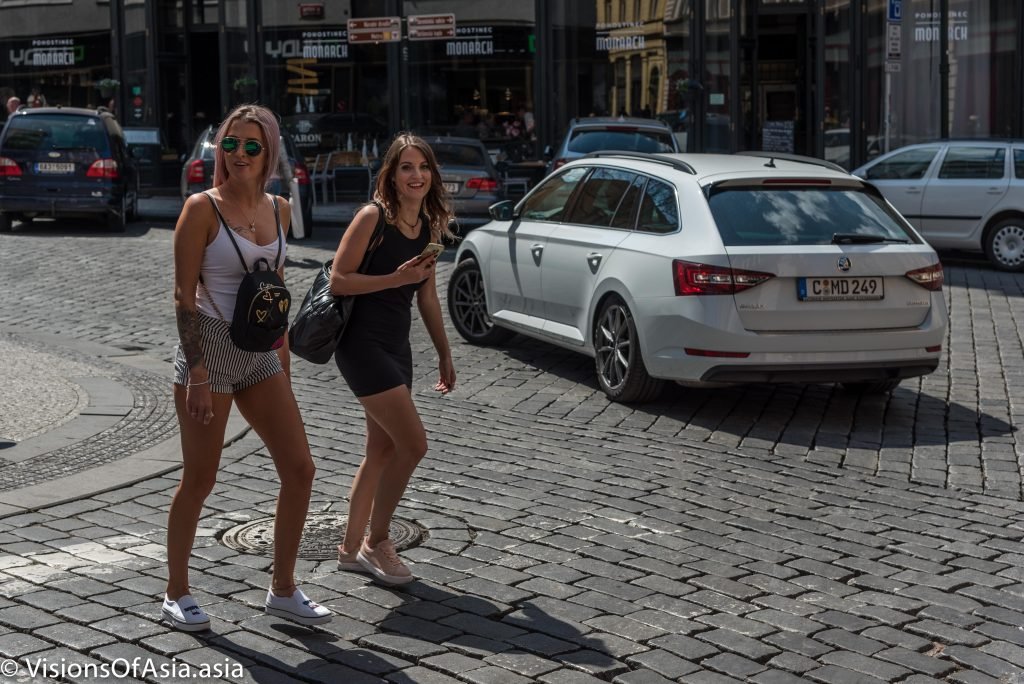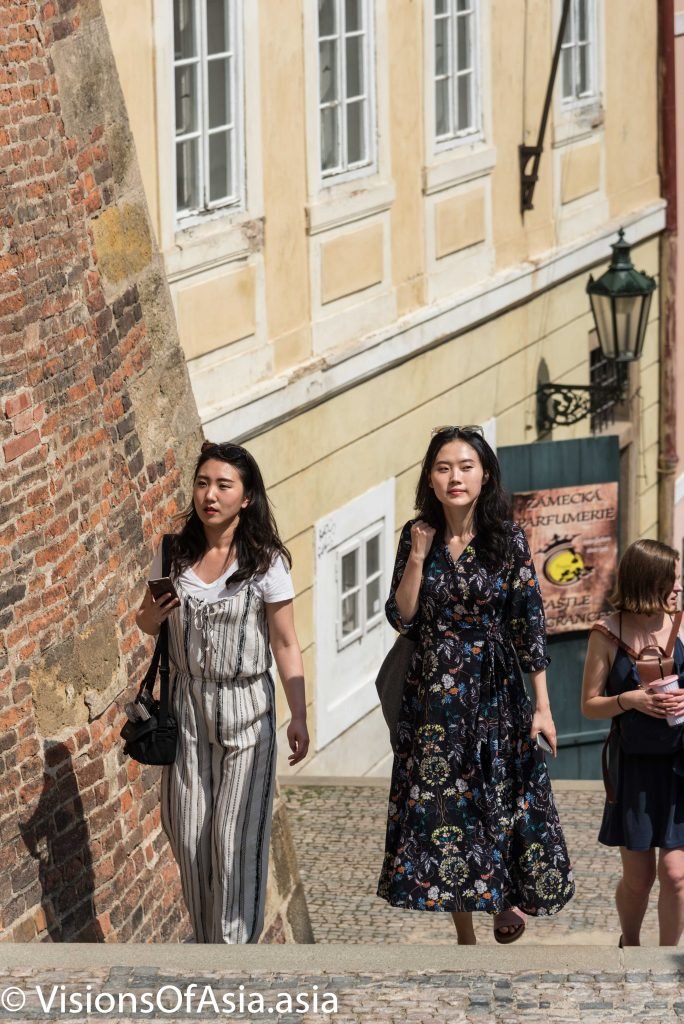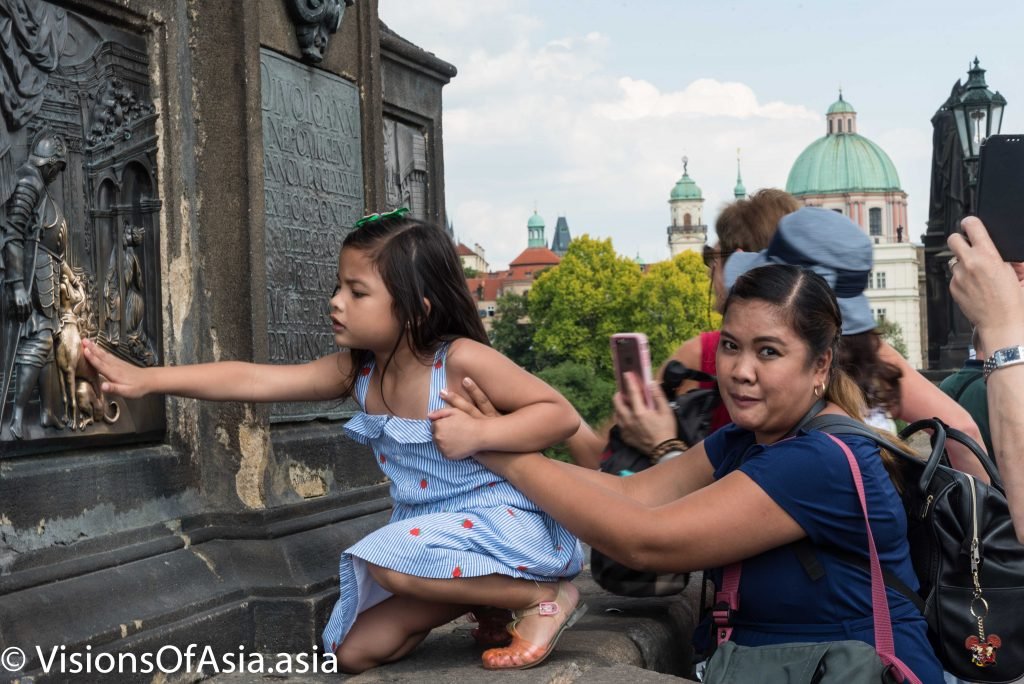Last May, I was in Prague to participate to a meeting organized by my company. I seized the occasion to have my wife and daughter fly with me to the “Golden Prague” or the “golden city” as the Czech capital is known, occasion of seeing one of the most beautiful cities in Central Europe.
Reaching Prague
There are many ways to reach Prague from Asia, but we took Finnair, as it was the most convenient way of reaching the city. My wife and daughter enjoyed the business class on board the Finnair flight to Prague.

It was an excellent flight, with the habitual excellent food of Finnair. Mitch and Maria-Sophia both enjoyed this short but agreeable trip.

The landing was smooth with the lovely Czech countryside developing for miles before the landing.
The “golden city”
Prague has often had the nickname of being the “golden city”, for its sheer beauty and baroque rooftops. Upon our arrival, we set out thus, to go and see for ourselves the beautiful city. My hotel was at the King’s Court, a very centrally located hotel in the old city of Prague. It allowed us to take a stroll immediately in the pedestrian center of the city.

We dropped our luggage and set off exploring the beautiful city of Prague right away

Maria-Sophia in Prague’s historical center 
Mitchy and Maria-Sophia before the Charles Bridge in Prague 
The Moldau (or Vlatava) seen from Charles bridge, with the unusual sight of a gondola…
The Prague Castle
The obligatory passage of any visit in Prague is the Prague castle, of course. After meandering through the streets of Prague, we came across this magnificent IXth century castle, which is also the official seat of the President of the Czech Republic.

While the IXth century St. Vitus cathedral presents undoubtedly gothic features, the surroundings of the cathedral have been heavily influenced over the centuries by various constructions and particularly in the baroque style, such as the St. George basilica featured above.

The best part in Prague castle is probably the magnificent view over the rooftops. To get this view, you must enter a little coffee shop which offers an excellent package of coffee + strudel for about 5 €. Unbeatable for the magnificent views.
Photo ops
Most people decide to take pictures on the ramparts of the castle, and that’s what we did with Maria-Sophia too.

We eventually came back to Prague castle on our last day for more photos. It is worth pointing out that Asian tourists (and particularly Korean couples) seem to affection Prague, both at the castle and the Charles bridge for prenuptial pictorials.

Besides couples, you have also a lot of Asian tourists visiting this historical city.

Heading to the Moldau
You have two ways to go back to the Moldau. The first is to climb through the Wenceslas vineyards, which offer also a magnificent photo backdrop.

The other part involves exiting the castle at the opposite point of entrance and going down stairs in the old city. Many Asian tourists chose to take this route, just as these two Chinese tourists.

Of course, we also had our own photo sessions on these stairs.

Once we came back down to the historical center, we meandered again to the Charles bridge. This place is an absolute nightmare filled with tourists at any time of the day. The best moment to visit it is probably during early mornings, where fewer tourists are around.
The Charles Bridge
The Charles bridge is also famous for the saint who reportedly was executed on this bridge in the Middle Ages, namely Saint John of Nepomuk. Executed because, allegedly, he refused to betray the secret of the confession, it seems rather this execution was orbiting around the Western Schism. Saint John of Nepomuk supported a candidate wanted by the Roman Pope against the wishes of King Wenceslas for the attribution of a very rich abbey. This might be more of a motive than the romantic legend of refusing to violate the secrecy of confession.
As a reminder, the Western Schism was between the supporters of the Pope in Avignon, infeodated to the King of France and the Pope in Rome, who maintained the supremacy of the Church over earthly sovereigns. In short, the short-lived fight around theocracy, which came to an end under Pope Boniface VIII. This schism ended dividing European kingdoms across support for one or the other Pope, and sometimes even ran lines of divide within some nations, such as in present-day Czechia.
Today, a statue is erected on the Charles Bridge, at the place where the saint was thrown in the river.

The Charles Bridge, in itself was closed to circulation after WWII, as its age and multiple damages from flooding had weakened its structure. Its modern-day restoration which ended in 2010 is strongly criticized for failing to respect the ancient character of the bridge and mixing older and newer materials.

Along the Moldau
I guess that when you come to Prague, you suddenly understand the famous “Moldau” symphonic poem by the Czech composer, Bedřich Smetana. The river and its flow do really evoke the powerful and peaceful music of Smetana, and for a classical music lover, it is quite an emotional moment.

Prague is also the birth city of another great Czech composer, Anton Dvorak.
A golden city… with disagreeable people
After our travel to Prague, we came to the conclusion that while the city is magnificent, Czech people instead are mostly disagreeable and lack common customer service sense. The general attitude was rather rough and rude in shops or cafes, not to mention there is none of the friendliness we encountered for example in Finland or Spain.

